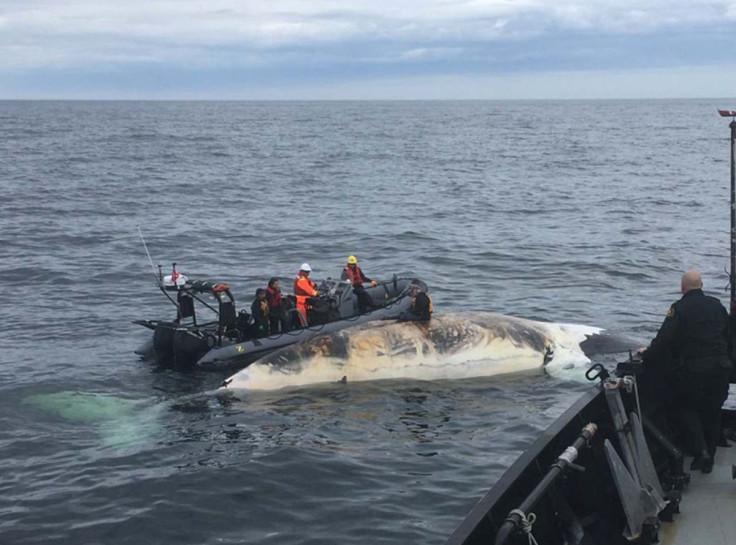North Atlantic Right Whales Extinction Feared After 13 Deaths In 3 Months

The death of the 13 North Atlantic right whales in the past few months has raised concern over the future of the endangered species, only around 500 of which exist in the world.
The latest death was reported from about 160 miles east of Cape Cod by the U.S. Coast Guard on Monday.
This was the third right whale death in the U.S. waters this summer and comes a week after the last death was reported in Martha’s Vineyard in Massachusetts.
Moreover, Canadian authorities have documented 10 dead whales in the Gulf of St. Lawrence since June 7.
With over two percent of the population dead within a matter of months, conservation groups and marine scientists have called for tougher measures to prevent ship strikes and entanglements — which have caused most whale mortalities on record — in the United States and Canada.
In fact, preliminary results of necropsies performed on some of the dead whales this summer indicate three of them suffered from internal bleeding typical of blunt force trauma consistent with a ship strike.
Dr. Kimberley Davies, a postdoctoral fellow in the Department of Oceanography, Dalhousie University with Chris Taggart, a renowned biological oceanographer at the university have developed the Whales, Habitat and Listening Experiment (WHaLE) project to study the impact of vessel strikes on the whales.
WHaLE uses acoustic technology, autonomous underwater vehicles (AUVs) and an existing marine tracking infrastructure to focuses on where the whales are and why. The project also charts ocean conditions present where right whales congregate.
“People want answers. They want to know why the right whales are dying and how to stop it,” Dr. Davies said. “The right whale research community is collecting some of the data required to try and answer those questions. But it’s going to take time.”
However, biologist Regina Asmutis-Silvia of the Plymouth, Massachusetts-based group Whale and Dolphin Conservation said time was of the essence in making sure that the species doesn’t go extinct.
“This level of deaths in such a short time is unprecedented,” she said. “I just don’t know that right whales have time for people to figure it out. They need help now,” she told Associated Press this week.
The U.S. and Canada have taken measures with a focus on protecting right whales.
Fisheries and Oceans Canada has put in force a host of new methods, including surveillance flights along the Gulf of St. Lawrence coastline and closing a snow crab fishing area, said Sarah Gilbert, a spokeswoman for the department. The Canadian government has also announced new speed restrictions for ships, something which has been implemented in the U.S. too.
Dr. Davies said these measures reflected how serious the issue was but emphasized the importance of getting the science right before large-scale, permanent measures were taken.
She said her project will eventually collect enough data to better understand the distribution of right whale prey fields and the boundaries of their habitats among others.
“When you’re trying to decide where a closed off area should be, it should encompass not only where you’re seeing the whales today, but where you might expect them to be over longer time and space scales,” Dr. Davies said.
© Copyright IBTimes 2024. All rights reserved.





















